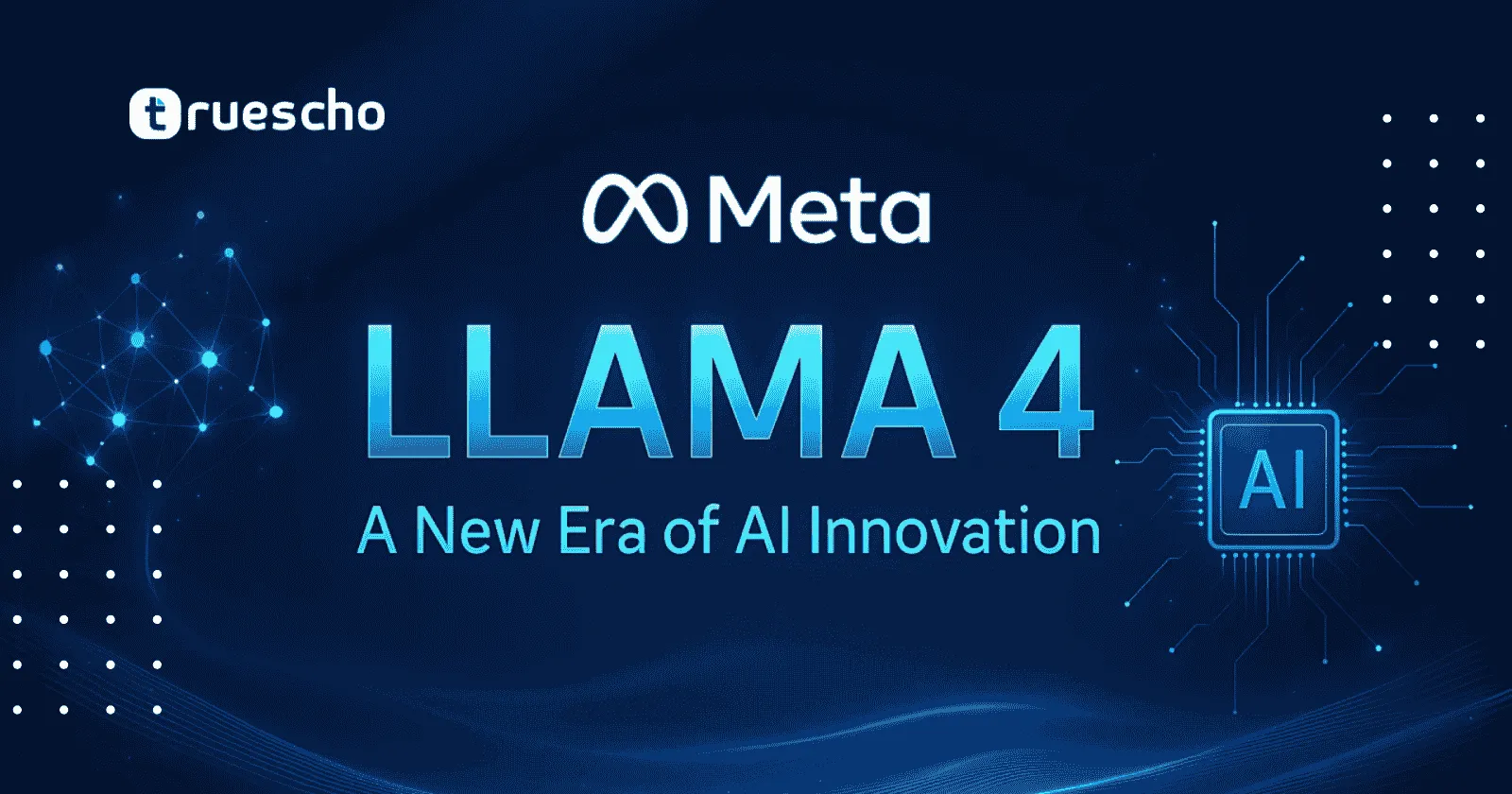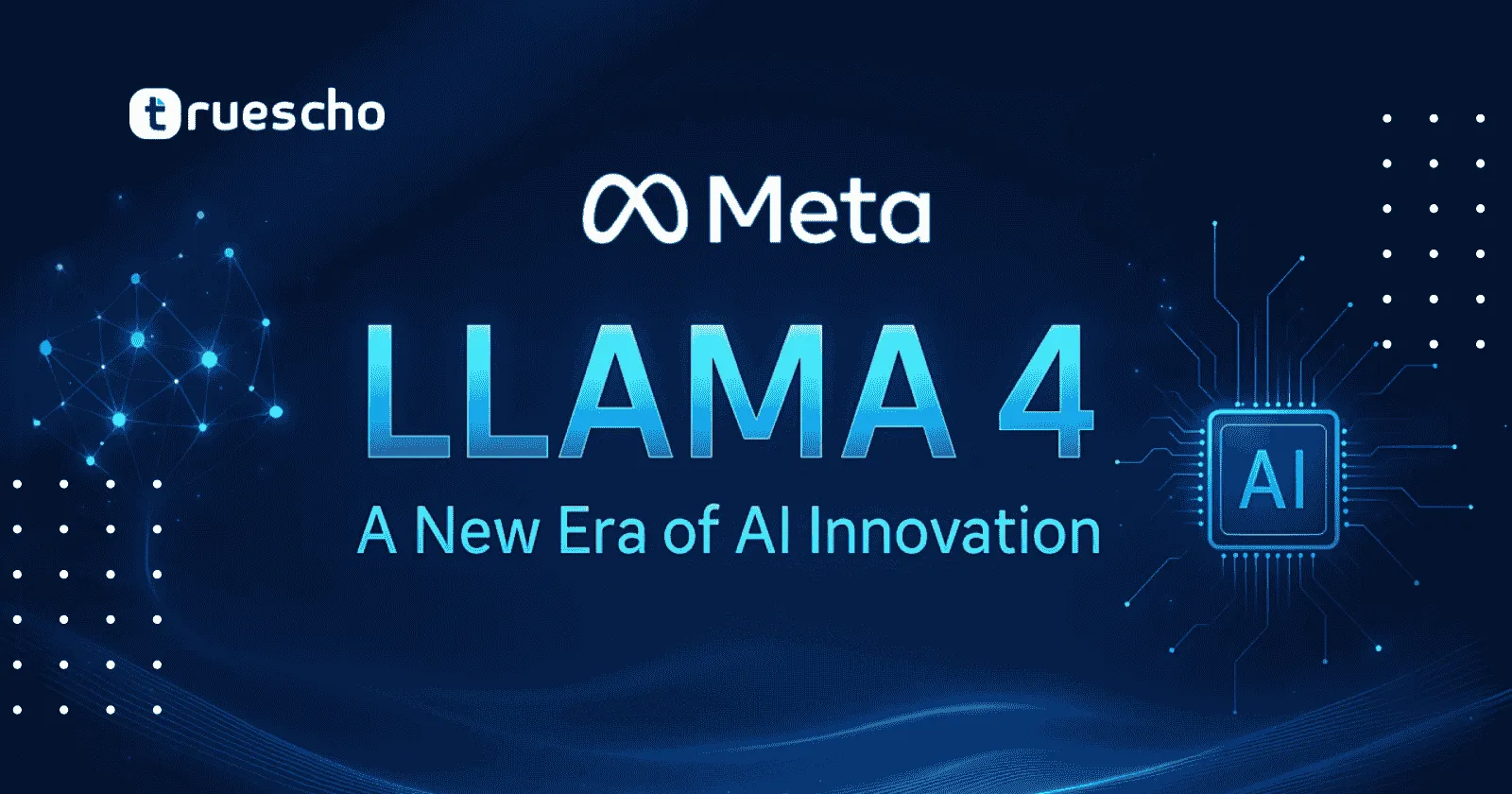أخبار الذكاء الاصطناعي: اكتشافات لاما 4 وابتكارات جديدة!
اقرأ أيضا: OpenAI Optimus Alpha
جدول المحتويات
- 1 لاما 4: حقبة جديدة في نماذج اللغة
- 2 تعزيز التخصيص: ثورة الذاكرة
- 3 تحسينات Google متعددة الاتجاهات في مجال الذكاء الاصطناعي
- 4 الابتكارات المفتوحة: وصول مجاني إلى أدوات قوية
- 5 الذكاء الاصطناعي في الوسائط المتعددة وتحرير الفيديو
- 6 ترقيات المطورين وواجهات برمجة التطبيقات (APIs) بالجملة
- 7 أفكار أخيرة: مستقبل أخبار الذكاء الاصطناعي
لاما 4: حقبة جديدة في نماذج اللغة
تتصدر لغة لاما 4 من ميتا قائمة الاختراقات الأسبوعية في مجال الذكاء الاصطناعي. مع التحديثات الدراماتيكية والمعايير الرائعة، من المقرر أن تعيد لاما 4 تعريف ما يمكن أن تفعله نماذج اللغة. تأتي هذه اللغة في ثلاثة إصدارات مختلفة:
- لاما 4 Scout (كشاف): تتميز هذه النسخة بنافذة سياقية مذهلة تبلغ 10 ملايين رمز، ويمكنها معالجة ما يقرب من 7.5 مليون كلمة – أي ما يعادل تسع روايات كاملة الطول في طلب واحد. للمقارنة، هذا الحجم أكبر بخمس مرات مما تقدمه بعض المنافسين الرائدين.
- لاما for Maverick (متمرد): على الرغم من أنها تحتوي على نافذة سياقية أصغر تبلغ مليون رمز، إلا أنها توفر معلمات محسنة لتطبيقات مختلفة. تخيل القدرة على احتواء سلسلة كتب شائعة بأكملها ضمن طلب واحد.
- لاما for Behemoth (وحش): من المتوقع أن تكون هذه النسخة الأكبر على الإطلاق، حيث تضم تريليوني معلمة، ولا تزال قيد التطوير، ومن المتوقع أن تدفع حدود ما هو ممكن حسابيًا.
على الرغم من أن ميتا تروج لهذه النماذج على أنها مفتوحة المصدر، إلا أن التعريف الحقيقي لـ “مفتوح المصدر” في هذا السياق أثار بعض الجدل. على سبيل المثال، إذا قام المطورون بدمج الأدوات المستندة إلى لامّا على نطاق واسع، فقد تكون هناك حاجة إلى بعض التصاريح من ميتا، ويجب أن تحتفظ أي نماذج مشتقة بتسمية لامّا. وقد أثارت هذه الشروط جدلاً كبيرًا داخل مجتمع الذكاء الاصطناعي.
“إن استخدام نسخة معدلة خصيصًا لاختبار لوحات الصدارة، مع إصدار نسخة أكثر قياسية للجمهور، يترك الكثيرين يتساءلون عما هو معروض بالضبط.” – مراقب صناعة الذكاء الاصطناعي
أظهرت الاختبارات المبكرة على لوحات صدارة النماذج العمياء أن لاما 4 تصدرت القائمة. ومع ذلك، كانت هناك خلافات بين إصدار لوحة الصدارة والإصدار المتاح على نطاق واسع، مما أثار نقاشات حول العدالة والشفافية في تقييم أداء النماذج.
تعزيز التخصيص: ثورة الذاكرة
بالتوازي مع الإنجازات البارزة في لاما 4، تحقق الشركات التقنية الكبرى تقدمًا كبيرًا في مجال الذكاء الاصطناعي المخصص. قامت Microsoft بتحديث Copilot مؤخرًا، مما يتيح لنظامها تذكر المحادثات السابقة – مما يجعل التفاعلات أكثر تخصيصًا بمرور الوقت. يسمح هذا التحسين لـ Copilot بالتعرف على تفضيلات المستخدم (مثل تفاصيل المشروع أو حتى الحكايات الشخصية) مما يؤدي إلى تحسين تجربة المستخدم بشكل ملحوظ.
تخيل عدم الحاجة إلى إعادة إدخال نفس معلومات الخلفية في كل مرة تتفاعل فيها مع مساعدك بالذكاء الاصطناعي. هذه المثابرة في الذاكرة تغير قواعد اللعبة، وتسد الفجوة بين التفاعلات التي تقودها الآلة والمحادثات الشبيهة بالإنسان.
لم تتوقف هذه التطورات عند المساعدين الشخصيين، حيث شهد المطورون مساعي مبتكرة في المجالات الإبداعية. عرضت Microsoft نسخة من لعبة إطلاق نار كلاسيكية من منظور الشخص الأول، حيث يتم إنشاء كل إطار ديناميكيًا بواسطة الذكاء الاصطناعي. على الرغم من وجود بعض الأخطاء الطفيفة – اختفاء شخصية هنا وخلل هناك – فقد سلط العرض الضوء على إمكانات الذكاء الاصطناعي في إنشاء المحتوى في الوقت الفعلي.
تحسينات Google متعددة الاتجاهات في مجال الذكاء الاصطناعي
انشغلت Google أيضًا بتطوير عروضها في مجال الذكاء الاصطناعي، حيث قدمت تحديثات متعددة تعمل على تحسين تفاعل المستخدم وتجربة المطور بشكل كبير.
- وضع البحث المحسّن بالذكاء الاصطناعي: يمكن لوضع البحث في Google الآن التعامل مع الاستعلامات الأطول والمقارنات المتعمقة وحتى الأسئلة المعقدة “كيفية”. كما أنه يدعم البحث المستند إلى الصور، مما يعني أنه يمكنك التقاط صورة لمكتبتك والحصول على توصيات بشأن العناوين المماثلة.
- إعلانات Google Cloud Next: من المقرر إطلاق وحدة معالجة Tensor جديدة (TPU) في وقت لاحق من هذا العام. بالتزامن، يتم تقديم بروتوكول من وكيل إلى وكيل يسمى A2A، مما يسهل التواصل السلس بين وكلاء الذكاء الاصطناعي دون تدخل بشري.
- تحديثات Workspace وFirebase Studio: يضم Google Docs الآن وظيفة النسخ الصوتي، بينما تُظهر التحسينات في Sheets وMeet تكاملًا أكثر قوة لقدرات الذكاء الاصطناعي. بالنسبة لمطوري التطبيقات، يعد Firebase Studio بمثابة انفراجة – مساحة عمل الذكاء الاصطناعي كاملة المكدس هذه مجانية وتتيح للمستخدمين إنشاء التطبيقات ونشرها بطلب واحد فقط. لمزيد من التفاصيل، تفضل بزيارة الموقع الرسمي لـ Firebase.
بالإضافة إلى ذلك، قامت Google بتسريع عروضها الإبداعية من خلال إطلاق أدوات جديدة لتوليد الصوت (Chirp 3)، وإنشاء نص إلى صورة (Imagine 3)، وحتى تحويل النص إلى موسيقى (Leah). تعكس هذه الأدوات المتنوعة التزام Google بتوسيع حدود ما يمكن أن يحققه الذكاء الاصطناعي للمستخدمين العاديين.
عزز إنتاجيتك باستخدام أدوات الذكاء الاصطناعي المتقدمة
اكتشف كيف يمكنك الارتقاء بمستوى كتابتك وإبداعك الرقمي باستخدام حلول الذكاء الاصطناعي المتطورة. استكشف القدرات في
ArWriter.ai
وحسّن سير عملك بسهولة.
الابتكارات المفتوحة: وصول مجاني إلى أدوات قوية
بعيدًا عن إعلانات الشركات، تدور ضجة حول النماذج الجديدة مفتوحة المصدر التي تغير قواعد اللعبة. يأتي أحد هذه التطورات من نموذج يُزعم أنه يوفر نافذة سياقية تصل إلى مليون رمز للاستخدام المجاني. هذه الأداة تولد اهتمامًا كبيرًا لأنها يمكن أن توفر أداءً على مستوى GPT-5 دون تكلفة إضافية.
علاوة على ذلك، خضعت ChatGPT لتحديث كبير، حيث تضمن ترقية ذاكرة واسعة النطاق تسمح لها بالرجوع إلى التفاعلات السابقة. في حين أن التخصيص المتزايد يمثل قفزة كبيرة إلى الأمام، يجب على المستخدمين توخي الحذر لأن البيانات التاريخية يمكن أن تؤثر بشكل طفيف على الاستجابات المستقبلية.
على نحو مماثل، وصل Claude Max من Anthropic مع خطط استخدام متعددة المستويات مصممة لتلبية مجموعة من احتياجات المستخدمين – من التفاعلات العرضية إلى المستخدمين المحترفين الذين يحتاجون إلى قدرات متزايدة. يضمن هذا التنوع في العروض أنه يمكن للمؤسسات والمستخدمين الأفراد على حد سواء الاستفادة من أنظمة الذكاء الاصطناعي ذات القدرات المتزايدة.
“إن تمكين المطورين والمستخدمين النهائيين بأدوات مجانية ومتميزة هو مفتاح إضفاء الطابع الديمقراطي على قدرات الذكاء الاصطناعي المتقدمة.” – محلل التكنولوجيا
اقرأ أيضا: إزالة مساعد جوجل من وايز على iOS

الذكاء الاصطناعي في الوسائط المتعددة وتحرير الفيديو
لا تقتصر الثورة في الذكاء الاصطناعي على النصوص والمحادثات. يتم الآن تحويل تحرير الفيديو وإنشاء الموسيقى وتطوير الألعاب بواسطة الذكاء الاصطناعي. تعد الأدوات الجديدة لتوليد الفيديو بإنشاء محتوى قصير في غضون ثوانٍ معدودة – مما يعيد تعريف سير العمل الإبداعي لمنشئي المحتوى.
تتميز برامج تحرير الفيديو الرائدة الآن بوظائف مدعومة بالذكاء الاصطناعي تسمح للمستخدمين بمزامنة اللقطات تلقائيًا مع البرنامج النصي، وتحسين تحديدات القناع السحري، وحتى إنشاء التعليقات الصوتية بالذكاء الاصطناعي عن طريق التدريب على صوت المستخدم نفسه. بالإضافة إلى ذلك، تُظهر مولدات الفيديو السريعة مثل Gen 4 Turbo و Nova Real مدى سرعة إنتاج المحتوى الديناميكي، مما يزيد من تمويه الخطوط الفاصلة بين الإنتاج التقليدي والإنشاء بمساعدة الذكاء الاصطناعي.
بالنسبة للمطورين ومنشئي المحتوى على حد سواء، تفتح هذه التطورات إمكانيات لا حصر لها، مما يضمن إمكانية الوصول إلى إنتاج وسائط عالية الجودة دون تكاليف باهظة أو مجموعات مهارات فنية واسعة النطاق.
ترقيات المطورين وواجهات برمجة التطبيقات (APIs) بالجملة
في العصر الذي تعد فيه واجهات برمجة التطبيقات (APIs) وأدوات المطورين هي العمود الفقري للابتكار السريع، تم طرح العديد من التحديثات المثيرة:
- تتيح الترقية في Gemini API الآن الوصول إلى إصدارات متعددة، بما في ذلك Gemini 2.5 Flash و Gemini Pro، مما يوفر للمطورين نظامًا بيئيًا غنيًا لبناء التطبيقات المدعومة بالذكاء الاصطناعي.
- تم تعزيز أدوات كتابة التعليمات البرمجية التي تم إنشاؤها بواسطة الذكاء الاصطناعي بنماذج مفتوحة المصدر مثل Deepcoder 14B، مما يمنح المبرمجين إمكانية الوصول إلى موارد شاملة لتوليد التعليمات البرمجية.
- تساعد الأنظمة المتكاملة التي تربط بين وكلاء الذكاء الاصطناعي، مثل تلك التي تم تقديمها لتكاملات سير عمل Gmail، على تبسيط العمليات دون الحاجة إلى كتابة تعليمات برمجية مخصصة مكثفة.
لا تجعل تحديثات المطور هذه بناء التطبيقات المبتكرة أسهل فحسب، بل إنها تعمل أيضًا على تعزيز بيئة تعاونية حيث يعمل وكلاء الذكاء الاصطناعي وأدوات التطوير التقليدية في انسجام تام.
أفكار أخيرة: مستقبل أخبار الذكاء الاصطناعي
تمثل التحديثات التي تم تناولها هذا الأسبوع مجرد لمحة عن نظام بيئي يتطور بسرعة في عالم الذكاء الاصطناعي. مع تحديد لامّا 4 من ميتا لمعايير جديدة في القدرة والحجم، ووعد ترقيات الذاكرة المخصصة بتوفير تفاعلات أكثر طبيعية، وتمكين أدوات واجهة برمجة التطبيقات (API) والمطورين المبتكرة من الإبداع السريع عبر الوسائط المتعددة ومنصات الترميز، تؤكد أخبار الذكاء الاصطناعي أن المستقبل هنا – ويتوسع في كل اتجاه.
بينما نشهد هذه التطورات الدراماتيكية، يصبح من الواضح بشكل متزايد أن الذكاء الاصطناعي ليس مجرد مفهوم مستقبلي، بل هو أداة قوية تعيد تشكيل الصناعات والحياة اليومية بشكل فعال. بالنسبة لأي شخص يستثمر في التكنولوجيا، توفر هذه التطورات ثروة من الفرص لتبسيط سير العمل، وتعزيز الإبداع، وبناء الأنظمة التي كانت تعتبر ذات يوم من الخيال العلمي.
اقرأ أيضا: المركبات الصغيرة الكهربائية
تشمل النقاط الرئيسية ما يلي:
- يحدد نهج لامّا 4 متعدد الإصدارات معايير جديدة في التعامل مع كميات هائلة من البيانات السياقية.
- تعد ميزات الذاكرة في مساعدي الذكاء الاصطناعي مثل Microsoft Copilot و ChatGPT بتوفير تجربة مستخدم أكثر تخصيصًا.
- يواصل التوسع السريع لـ Google في البحث والخدمات السحابية والأدوات الإبداعية بالذكاء الاصطناعي قيادة الموجة التالية من التحول الرقمي.
- يتم تمكين مجتمعات المطورين من خلال واجهات برمجة التطبيقات (APIs) المتقدمة والأدوات مفتوحة المصدر، مما يمهد الطريق للتطبيقات المبتكرة في مختلف المجالات.
بينما تتقاطع هذه الابتكارات مع الروتين اليومي والمهام المهنية على حد سواء، فإن البقاء على اطلاع من خلال مصادر أخبار الذكاء الاصطناعي الموثوقة أمر ضروري. المشهد ديناميكي، والبقاء على اطلاع يعني تبني أدوات جديدة، والتكيف مع سير العمل المحدثة، والتعلم المستمر حول التقنيات التي تدفع عالمنا.
احصل على دليل شامل للدراسة في رومانيا!
اكتشف كل ما تحتاج معرفته حول الدراسة في رومانيا، من متطلبات القبول إلى الحياة الطلابية.
احصل على نسختك الآن من خلال هذا الرابط.
